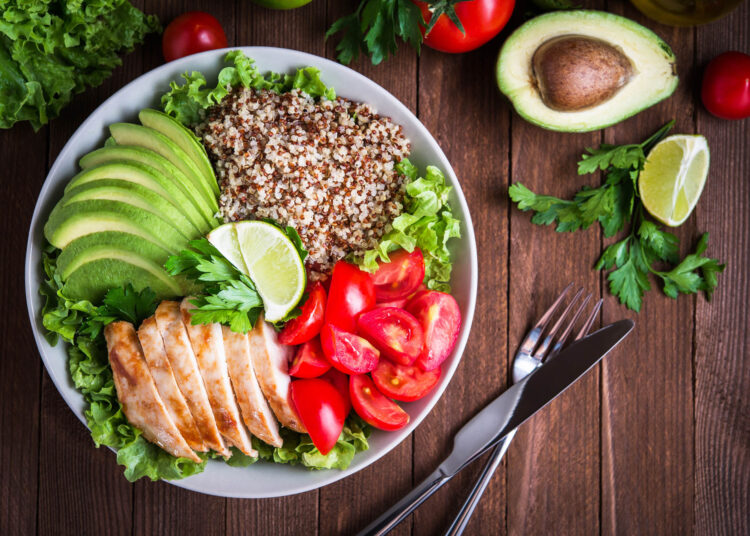Supercharge Your Health: The Wonders of Superfoods Unveiled
Discover how superfoods are revolutionizing health and wellness, driving a global market surge fueled by increased health consciousness.
1. The Rise of Superfoods
The superfoods market is experiencing unprecedented growth, propelled by consumers eager to integrate nutrient-rich options into their diets. These foods, celebrated for their exceptional antioxidant levels, vitamins, and minerals, are becoming staples in households worldwide. This surge reflects a broader shift towards preventative healthcare, as individuals proactively seek dietary solutions to boost mental clarity, enhance energy, and diminish the likelihood of chronic diseases.
2. Market Growth and Projections
Driven by growing health awareness, the global superfoods market is not just expanding—it’s exploding.
| Year | Region | Market Size (USD Billion) | Market Share (%) | Projected CAGR (%) (2025-2032) |
|---|---|---|---|---|
| 2024 | Global | 188.02 | — | — |
| 2025 | Global | 202.10 | — | 7.70 |
| 2032 | Global | 339.59 | — | |
| 2023 | North America | — | 41.2 | — |
| 2032 | U.S. | 81.31 | — | — |
Data source: Fortune Business Insights, “Superfoods Market Size, Share, Trends, Growth Report, 2032” Published June 30, 2025
As evidenced in the table, the global market is expected to reach $339.59 billion by 2032. This growth is further highlighted by a projected CAGR of 7.70% from 2025 to 2032, showcasing the sustained momentum and increasing demand for superfoods.
3. Regional Dominance in North America
North America stands out as a leading force in the superfoods market, capturing over 40% of global sales. This dominance is fueled by a health-conscious population keen on functional food trends. The United States, a significant contributor to this regional success, is witnessing substantial market growth, solidifying its position as a key player in the superfoods arena.
4. Accessibility and Integration
One of the key drivers behind the superfoods revolution is their increasing availability and ease of integration into daily diets. With a wider array of superfood options now accessible, consumers find it simpler than ever to incorporate these health-boosting foods into their meals and snacks, paving the way for sustained wellness and vitality.
Low-Calorie Marvels: Satisfying Your Appetite Without Guilt
Discover how to indulge in delicious, guilt-free eating with nature’s low-calorie powerhouses, perfect for maintaining a balanced diet in 2025.
1. The Reign of Kale
Kale remains a nutritional champion, celebrated for its minimal calories and impressive nutrient density. In 2025, it’s not just a trend but a staple, offering a substantial 2g of protein per cup. Beyond protein, kale is rich in manganese, crucial for energy metabolism, and packed with antioxidants that combat aging and disease.
2. Zucchini: The Summer Staple
Zucchini shines as a versatile summer vegetable, providing both low calories and essential nutrients. Its fiber content aids digestion, while vitamin B6 plays a key role in mood regulation and maintaining stable blood sugar levels. This makes zucchini an ideal choice for those seeking to manage their weight and overall well-being.
3. Cucumber’s Hydrating Power
Cucumbers stand out for their high water content, exceeding 90%, making them incredibly hydrating. Their natural diuretic properties help combat bloating, while the silica content promotes healthy skin. The magnesium found in cucumber seeds also supports healthy digestion, contributing to overall wellness.
4. Berry Sweetness and Benefits
Berries, like strawberries, offer a naturally sweet treat without the guilt. They are packed with vitamin C, a potent antioxidant, as well as manganese and dietary fiber. This combination supports immune function, energy production, and digestive health, making berries a delicious and nutritious addition to any diet.
Beyond the Plate: How Antioxidants Protect and Repair Your Body
Discover how incorporating antioxidant-rich foods into your diet can help protect your body and promote overall well-being.
1. The Power of Antioxidants
Antioxidants, naturally abundant in fruits, vegetables, and even certain edible weeds, are crucial for shielding our bodies from oxidative stress. This stress is a major contributor to aging and various chronic diseases. Prioritizing these natural sources can significantly impact our health.
2. Anthocyanins and Bone Health
Anthocyanins, a type of polyphenol flavonoid found in foods like berries and blackcurrants, are known for their potent anti-inflammatory and antioxidant properties. Research suggests that diets rich in anthocyanins may improve bone health biomarkers in older adults by boosting glutathione peroxidase activity and reducing inflammation.
3. Vitamin C and Glutathione: Key Defenders
Vitamin C, also known as ascorbic acid, directly neutralizes harmful reactive oxygen species like hydrogen peroxide. Meanwhile, glutathione stands out as one of the most vital cellular antioxidants, playing a critical role in maintaining redox balance within our cells, ensuring they function optimally.
4. Superfoods for Optimal Health
Emerging findings highlight the potential benefits of both consuming and applying bioactive compounds with antioxidant properties. This underscores the importance of focusing on antioxidant-rich superfoods, rather than relying solely on supplements, to unlock optimal body function, support cardiovascular health, strengthen bones, and potentially reduce the risk of cancer.
The Grain Game: Discovering Whole Grains for a Balanced Diet
Unlock the secrets of whole grains and learn how to incorporate them into your daily meals for a healthier, more balanced lifestyle.
1. The Whole Grain Advantage
Whole grains are frequently highlighted as a key component of a well-rounded diet, thanks to their rich supply of dietary fiber, essential vitamins, minerals, and other health-boosting compounds. Current nutritional guidelines often suggest including at least one serving of whole-grain-rich foods each day to reap optimal health rewards. But with so many options, how do you choose?
2. Nutrient Density Varies
It’s important to recognize that the nutritional value can differ significantly depending on the specific type of grain and the portion size you consume. For instance, while steel-cut oats offer a good balance of protein and fiber, they also contain a notable amount of carbohydrates in each serving. Similarly, whole wheat bread provides certain micronutrients but may have a higher carbohydrate content relative to its protein and fiber levels. The following table highlights these differences.
| Grain Food Type | Serving Size | Protein (g) | Fiber (g) | Net Carbs (g) | Calories |
|---|---|---|---|---|---|
| Steel-cut oats | 40 g (1/4 cup dry) | 5 | 4 | 23 | 150 |
| Whole wheat bread | 2 slices (~60 g) | 8 | 6 | 35 | 180 |
Data source: Diet Doctor, “Healthy Whole Grains: What the Evidence Really Shows” Published June 19, 2025
3. Variety is Key
Given the diverse nutrient profiles across various grains, incorporating a variety of grains into your diet can help maximize nutritional benefits. This approach supports not only heart health but also overall metabolic function. Are you ready to explore the world of whole grains beyond the usual suspects?
4. Reducing Hypertension Risk
Interestingly, research suggests that a higher intake of whole grains is associated with a reduced risk of hypertension. In fact, studies indicate that individuals with high consumption of whole grains may experience up to a 26% lower risk compared to those with low consumption. This finding underscores the potential benefits of including whole grains as part of a heart-healthy lifestyle.
Mastering Nutrition: Crafting a Personalized, Balanced Diet Plan
Discover how to move beyond generic diets and create a nutrition plan tailored to your unique needs and goals.
1. The Shift Towards Personalized Nutrition
Recent health guidance emphasizes personalized nutrition plans over generic diets. Modern tools and clinics now tailor calorie and macronutrient targets to individual activity levels, health objectives, and dietary preferences. This customized approach ensures that your diet aligns perfectly with your body’s specific requirements.
2. Key Elements of a Balanced Diet
A balanced diet should prioritize lean proteins, healthy fats, and fiber-rich foods like vegetables and whole grains. These components contribute to satiety and provide essential nutrients. Focusing on these elements helps ensure that you’re getting the right building blocks for a healthy body and sustained energy levels.
3. Mindful Eating and Flexible Timing
Mindful eating habits, such as paying attention to hunger cues, and flexible meal timing strategies can significantly improve adherence to healthy eating patterns. Recognizing your body’s signals and adapting your meal schedule accordingly can make healthy eating more sustainable and enjoyable.
4. Macronutrient Guidelines as a Starting Point
Dietary guidelines suggest that a typical adult should aim for a daily intake of approximately 225–325 g of carbohydrates, 78 g of fat, and 50–175 g of protein within a standard 2,000 kcal framework. These numbers serve as a general guide, but individual needs may vary significantly. The following table provides a quick reference:
5. Fine-Tuning Your Nutritional Approach
It’s crucial to fine-tune your nutritional approach based on individual requirements for optimal results. Whether using digital planners or working with professionals, personalize your diet to unlock your full potential through balanced nutrition. Remember, the key is to make informed choices that support your unique health journey.
Q&A
Question 1: What is driving the significant growth in the superfoods market?
Answer: The superfoods market’s explosive growth is primarily fueled by increased health consciousness among consumers. People are proactively seeking nutrient-rich foods to improve their well-being, boost energy levels, sharpen mental clarity, and reduce the risk of chronic diseases. This shift towards preventative healthcare is a key factor in the market’s expansion.
Question 2: Which region is currently dominating the superfoods market, and what contributes to its success?
Answer: North America holds the leading position, accounting for over 40% of global superfood sales. This dominance stems from a health-conscious population embracing functional food trends. The United States, in particular, plays a significant role in this regional success, showcasing substantial market growth.
Question 3: What makes low-calorie vegetables like kale, zucchini, and cucumber appealing dietary choices in 2025?
Answer: These vegetables offer a combination of low calories and high nutritional value. Kale provides protein and antioxidants; zucchini offers fiber and vitamin B6 for mood regulation and blood sugar control; and cucumbers are highly hydrating and contain beneficial nutrients like silica and magnesium. They provide satiety without excessive calorie intake.
Question 4: How do antioxidants, particularly anthocyanins and Vitamin C, protect the body from damage?
Answer: Antioxidants combat oxidative stress, a major contributor to aging and chronic diseases. Anthocyanins, found in berries, have anti-inflammatory and antioxidant properties, potentially improving bone health. Vitamin C directly neutralizes harmful reactive oxygen species, while glutathione plays a vital role in maintaining cellular redox balance. These compounds help protect cells from damage.
Question 5: What are the key nutritional benefits of whole grains, and why is variety important?
Answer: Whole grains are rich in dietary fiber, essential vitamins, and minerals. However, their nutritional profiles vary. Steel-cut oats offer good protein and fiber, while whole wheat bread provides micronutrients. Consuming a variety of whole grains ensures a broader range of nutrients, maximizing health benefits and potentially reducing the risk of hypertension.













